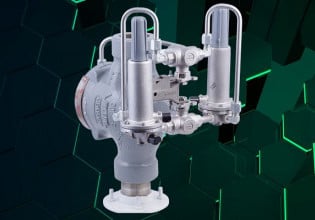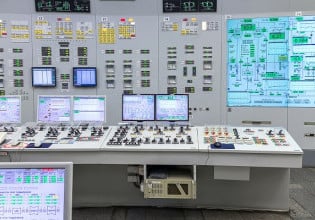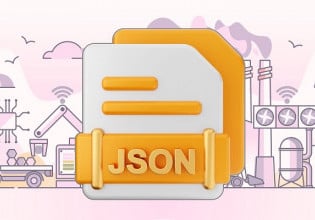Conveyor Belt Maintenance Strategies
When the conveyor belt goes down, what do you do? Follow a few of these preventive maintenance strategies to help get production back on track.
Conveyor belt systems are an integral part of industrial operations. They are also subject to regular preventive maintenance in a facility. However, problems in conveyor belts can halt the whole production process cycle until troubleshooting transpires and the conveyor belt continues operation. Conveyor belt maintenance is an important part of maintenance strategies in a facility.
Common Conveyor Belt Problems
Conveyor belts have a few common problems addressed below, such as belt misalignment, slip, and issues with rotating components, to name a few.
Belt Misalignment
Belt misalignment occurs when the belt drifts away from the conveyor's center point. This causes the belt to move in a non-uniform, zig-zag pattern along the conveyor length. The material also follows the non-stable belt movement from one side to another along the conveyor length.

Figure 1. A conveyor belt misalignment switch can be implemented for safety purposes. Image used courtesy of GURTEC
The resulting unsteady belt movement can damage the material, and this condition can be even worse at high speeds and with longer conveyor lengths. In addition, belt misalignment can physically damage the belt, making it unusable for conveyors.
A common cause of belt misalignment is using a narrow belt width or not ensuring that the belt is cut properly. This problem can also occur if debris or any material sticks in conveyor pulleys or rollers, making the rollers and pulleys uneven, thus affecting the belt alignment.
Belt Slip
Belt slip occurs when the drive roller fails to move the belt. Under this condition, the belt randomly moves and stops, although the drive rollers normally rotate with their standard capacity. Belt slip damages the belt due to friction between drive rollers and the belt. The first sign of belt slip is often a loud noise.

Figure 2. A motion sensor may be able to detect belt slip before it becomes dangerous. Image used courtesy of ifm electronic
The main cause of belt slip is an improper grip between the belt and the drive roller. The tension between the rotating roller and the belt must be within a proper limit to ensure contact is made. Another cause of belt slip is wear and tear in mechanical moving parts, such as pulleys. It can also result from transporting overweight material, which exerts a force on the belt that hinders its movement.
Problems with Rotating Components
A conveyor belt's main work depends on rotating mechanical parts, such as pulleys and rollers. If there is any resistance to their rotation, the entire conveyor belt will also face resistance.
Some common causes include improper lubrication and greasing or improper maintenance of rotating parts, especially the bearings. This causes harm to motors and can lead to overheating or overcurrent conditions, as seized rotating parts can pose extreme resistance to the motor’s motion.
Conveyor Belt Maintenance and Solutions
The conveyor belt systems must be subject to proper maintenance strategies such as preventive or predictive maintenance, just like other critical, expensive machines. Sometimes, the conveyor belts are overlooked in maintenance planning because of their simplicity and less critical operations. Following are some solutions for common conveyor belt problems.
Conveyor Maintenance
A proper checklist for conveyor belt maintenance must be developed and followed to ensure that they are correctly maintained.
Important points to consider during conveyor maintenance include the following.
- Abnormal noise must not be present.
- Rollers, pulleys, and other rotating parts must rotate uniformly without slipping or noise.
- The mechanical rotating parts must be properly lubricated.
- The belt should start without any jerk or vibration.
Belt Issues
The belt is an integral component in conveyor belt systems. Most problems primarily relate to belts; thus, proper belt maintenance protects the conveyors from the majority of these issues. Some common solutions related to the belts are listed below.

Figure 3. Outdoor conveyors, such as those for mining, may be more susceptible to breakdown.
Keeping the belt in the center position. Belt center alignment is necessary, and if not executed properly, it affects the conveyor operation and causes damage to the material. Facilities can maintain belt alignment using a belt of suitable width for the roller or drive mechanism size. They can also ensure alignment by balancing the rollers and pulleys across their two ends.
Proper cleaning. The debris collected at the rotating parts can cause belts to become uneven, resulting in belt misalignment. Cleaning can help avoid this, as well as prevent a decrease in part life due to rust and deformation.
Maintaining good belt condition. With the continuous use of a belt over time, the belts can develop problems. However, most problems in the conveyors can be easily solved by analyzing and maintaining the belts in good condition.
The following are common belt maintenance solutions that facilities can easily implement.
- The belt's physical appearance and condition should be free from defects, such as cuts and excessive wear.
- Use a belt with proper sizing across its length and width.
- Use a straight belt without any curves.
- The belt joints must be appropriate and must not hinder belt or material movement.
- Use standard material weight for the system, and avoid overweight material.
Conveyors have become a necessary part of the production process in all industries. Including warehouses and packaging sections, conveyors are also being used in production machines for transporting material between different machine sections. Examples include transporting caps in the capping machine through the cap elevator.
Most industries apply synchronized machine operations, meaning breakdown in any machine halts the whole operation. A breakdown in a conveyor belt results in machine breakdown, and subsequent operational chain breakdown. For this reason, facilities should properly maintain conveyor belt systems. This can include preventative maintenance for belts, with regular planning and a checklist.
The technician or engineer performing the maintenance must be trained, skilled, and experienced on conveyor belts to perform the most optimal maintenance activity.
Interested in more conveyance system content?
- Introduction to Conveyor Belt Systems
- What Makes a Smart Conveyor System “Smart”?
- Calculating the Speed of a Conveyor System
- VSD and VFD Motor Drive Features






